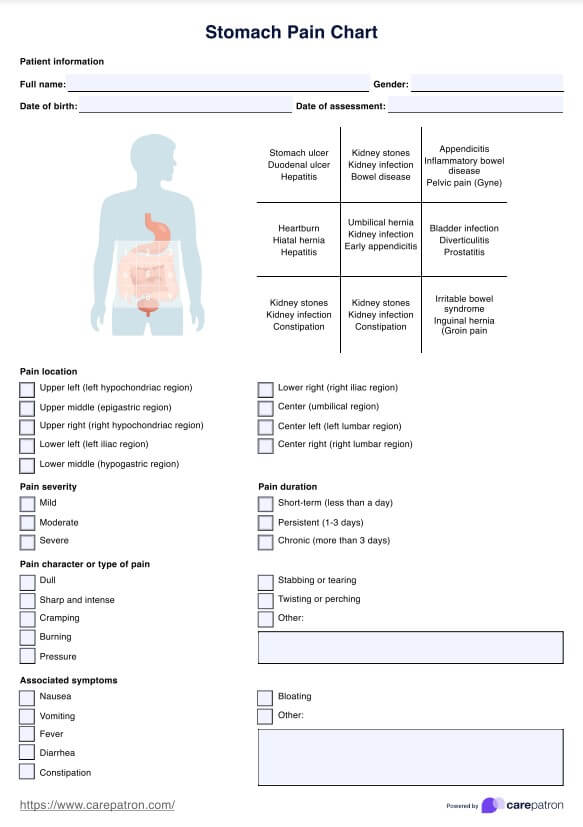Pain in the right upper quadrant can be caused by conditions affecting the liver, gallbladder, or right kidney. Common issues include gallstones, liver disease, and kidney infections. Understanding the specific nature and duration of pain is crucial in differential diagnosis.

Stomach Pain Chart
Stomach Pain Chart: Detailed tool for documenting abdominal pain, including location, intensity, symptoms, causes, and medical assessments.
Stomach Pain Chart Template
Commonly asked questions
Mild abdominal pain is often due to benign issues like indigestion or minor muscle strain. However, if the pain persists and is accompanied by symptoms like persistent nausea, fever, or changes in bowel movements, or if it intensifies rapidly, it could indicate more serious conditions like peptic ulcer disease, appendicitis, or kidney stones. A physical exam and possibly further diagnostic tests are recommended in such cases.
Generalized abdominal pain, which is felt over more than half of the abdomen, can be a sign of indigestion, a viral infection, gas, or even a life-threatening condition like acute abdomen, mesenteric ischemia, or small bowel obstruction. The presence of additional symptoms and a thorough clinical evaluation are necessary to narrow down the cause.
EHR and practice management software
Get started for free
*No credit card required
Free
$0/usd
Unlimited clients
Telehealth
1GB of storage
Client portal text
Automated billing and online payments











